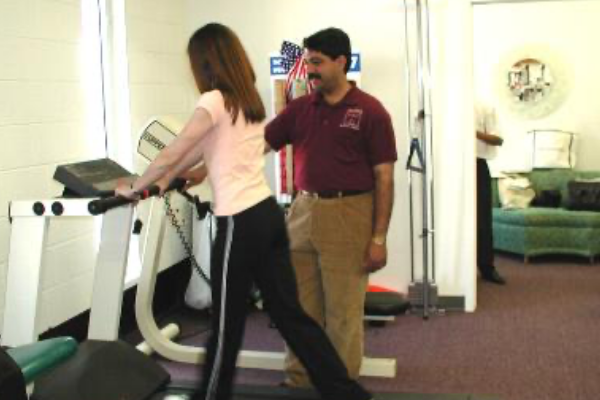The Physical Therapy and Sports Medicine Institute of Virginia has found that over 3 million people in the United States struggle with shin splints annually. Plenty of treatments and shin splints therapies have been introduced to tackle this health issue. You can utilize these therapies to ease the pain, recover shin splint bumps, and improve overall bone health.
What is Shin Splints?
Simply put, the shin is the front of your leg from your knee to your ankle. The shin splints are the pain and inflammation along the shin bone. Who is affected most by it? Well, according to the National Library of Science, 13.6% to 20% of runners suffer from shin splints, contributing up to 60% to lower limb injuries.
Are Shin Splints Microfractures?
Many raise the question about shin splints microfractures. The simple answer is no. A microfracture is a tear or crack in the bone. On the other hand, Shin splints are the tear or damage in the muscle or tendons attached to the bone. It’s not knee pain, ankle fracture, or bone damage. It’s a different situation that should be treated differently than knee pain with swollen ankle and foot injuries treatment.
What Causes Shin Splints?
The overworking of the shin muscles causes the splints. The National Library of Science surveyed to determine the main causes. The results clarify the two major causes. High-intensity exercises are responsible for 44.1% of shin splint cases, followed by martial arts, running, athletics, and other sporting activities at 47.6%. Runners, dancers, soldiers, and people who undergo heavy exercises are most affected by shin splint injuries.
How Do Shin Splints Feel Like?
Are you not sure whether the pain you are feeling is casual or a shin splint? Let’s examine the symptoms to help you understand how the pain feels.
- Sharp ache in the lower front part of the leg.
- At first, it would be like come and go, but after some time the pain is steady and persistent.
- Sharp pain in the shin bone that increases after physical activity.
What is Shin Splints Recovery Time?
The ideal time of recovery is generally three to four weeks. The shin splint recovery time depends on what kind of shin splint recovery plan you are going for. If your shin splint PT is experienced enough, your recovery will be more fruitful and faster.
How Can Shin Splints Be Treated?
Let’s discuss the best shin splints therapies and treatments that can help relieve pain and strengthen the muscles to prevent such injuries.
1- Physical Therapy For Shin Splints
If your shin pain persists for over two weeks, the best way to ease the pain is to switch to shin splints physical therapy, where PTs help you move and recover the muscle. For athletes and sportsmen getting into shin splint injuries and experiencing shin splints bumpsfrequently, sports injury physical therapy is the best option to go for.
2- Resting Therapy
One of the best ways to ease shin splint pain is to go on bed rest for 3 to 5 days and ice the area if you are dealing with acute inflammation. This will give your muscles enough shin splints recovery time to repair the damaged tendons and tissues.
3- Stretches Therapy for Shin Splints
Light and impactful stretching is a great way to achieve perfect results, such as shin splint physical therapy. Stretch your lower leg muscles, use a foam roller to put subtle pressure on the muscle, and utilize stretching bands to work on the ankle and shin muscles.
4- Massage Therapy
Can you Massage away Shin Splints? Well, you can use massage to ease the shin splint pain because it forces the muscles to relax and promotes blood circulation to speed up the muscle recovery process. Opt for manual massage or wood therapy for powerful results.
5- Slow Down on Physical Activities
Apart from physical therapy shin splints treatment, the best way to ease the pain is to step down from physical activities for a while. Avoiding heavy exercises, intense sports, and intense physical activities is the best free shin splint therapy.
How Lake County Physical Therapy Clinic Can Help?
We at Lake County Physical Therapy Clinic have some of the best PT for shin splints therapies to help speed up your shin splint recovery without pushing you to the limits. Be mindful and hire a physical therapist to discuss the perfect shin splints recovery plan according to your needs and pain level.
Let’s see what our most satisfied patients have shared about physio for shin splints and other types of knee and leg pain.
Jacqueline H. said:
“I loved the therapists and their work with me. They always made sure I was okay with all the procedures. I always felt better upon leaving than I did upon arrival. They never pushed me beyond my capacities.”
Another long-time patient, Loray M. shared:
“ I was having shin pain in my left leg when walking and sitting. My primary doctor suggested physical therapy, so I decided to go to this facility because of a previous experience. The therapists were very professional to give me individual attention at every session. Now I can walk, bend and move my leg without any pain.”
Time to Experience Shin Splints Therapies
Untreated shin splints are a severe problem that can affect overall well-being and daily activities. That’s why you should go for physical therapy to recover your shin bone and strengthen your muscles to excel in life. Consult Lake County Physical Therapy to book an appointment today.





